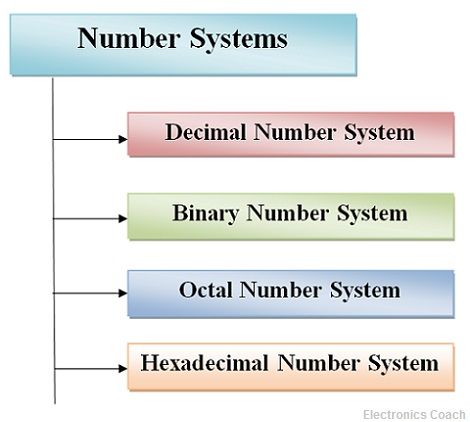Computers understand machine language, i.e every letter, symbol etc. that the user writes in the instructions which are provided to the computer gets transformed into machine language. This machine language comprises numbers. To understand the language employed by computers and other digital systems it is essential to have a better knowledge of the number system.
A number system gives a unique representation of numbers. It also enables users to execute arithmetic operations like subtraction, addition, and division which perform an essential role in computer applications and digital domains.
Number systems can be categorized into their sub types based on the base of that system. The base of a number system performs a vital role in understanding the number system and converting it from one sub-type to another sub-type. The base sometimes is also referred to as radix; both these terms hold the same meaning.
1. Decimal Number System (Base 10):
- The most common system we use in everyday life.
- Uses digits 0-9 to represent numbers.
- Place value increases by powers of 10 (10^0, 10^1, 10^2, ...).
- Example: 123 = 110^2 + 210^1 + 3*10^0
2. Binary Number System (Base 2):
- Essential for computers, which use binary digits (bits) to represent data.
- Uses only two digits: 0 and 1.
- Place value increases by powers of 2 (2^0, 2^1, 2^2, ...).
- Example: 1011 = 12^3 + 02^2 + 12^1 + 12^0 = 11 (in decimal)
3. Octal Number System (Base 8):
- Uses digits 0-7.
- Sometimes used in computing for compact representation.
- Place value increases by powers of 8 (8^0, 8^1, 8^2, ...).
- Example: 25 (in octal) = 28^1 + 58^0 = 21 (in decimal)
4. Hexadecimal Number System (Base 16):
- Widely used in computing for memory addresses and color codes.
- Uses digits 0-9 and letters A-F (A=10, B=11, ..., F=15).
- Place value increases by powers of 16 (16^0, 16^1, 16^2, ...).
- Example: 1A (in hexadecimal) = 116^1 + 1016^0 = 26 (in decimal)
Key Points:
- The base of a number system determines the number of digits used and their place values.
- Conversions between different number systems are possible using mathematical formulas.
- Each system has its specific applications in computing and other fields.







0comments:
Post a Comment
Note: only a member of this blog may post a comment.